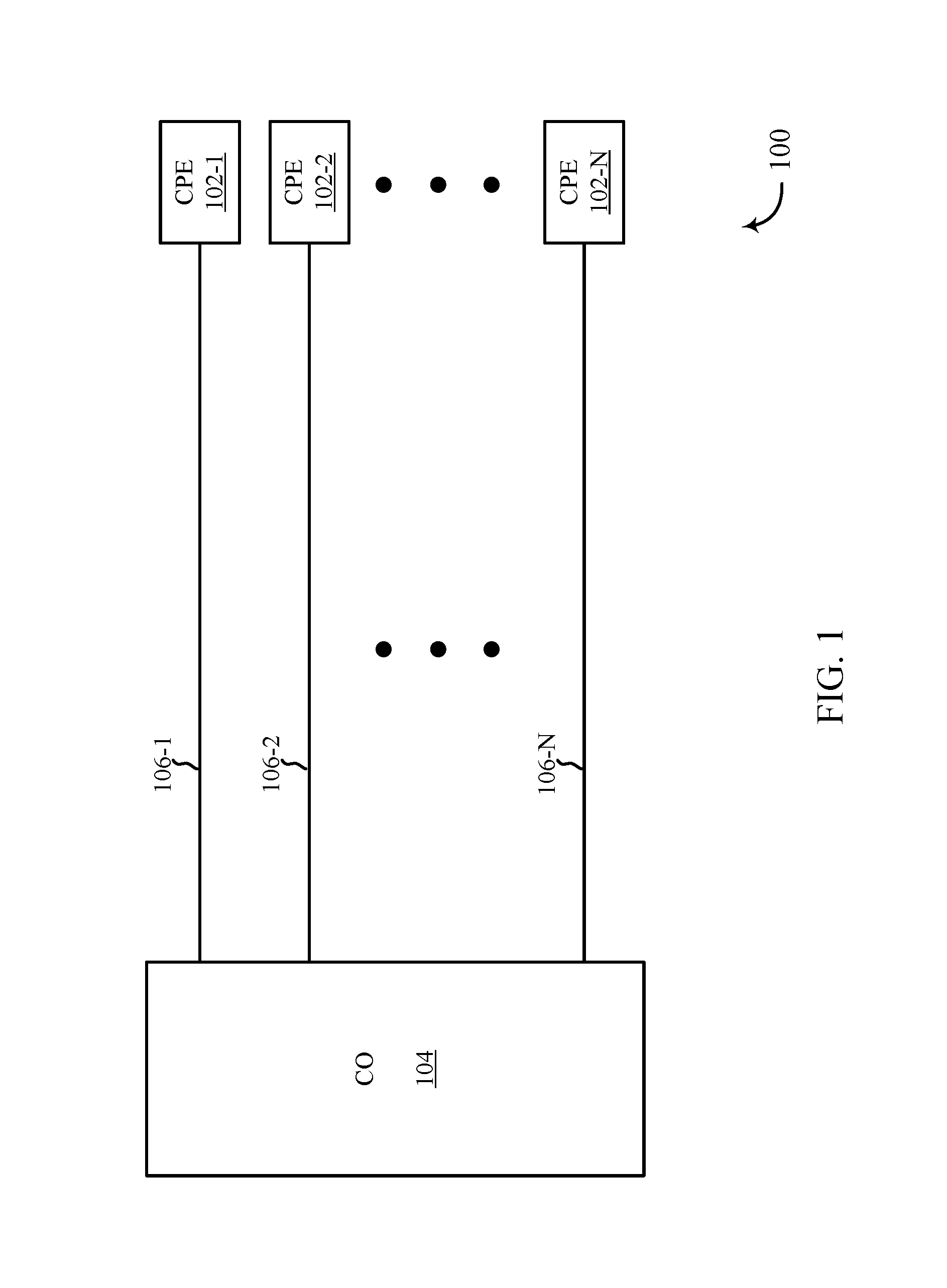Coefficient determination for digital subscriber line vectoring
- Summary
- Abstract
- Description
- Claims
- Application Information
AI Technical Summary
Benefits of technology
Problems solved by technology
Method used
Image
Examples
example 1
4-Tone Estimation (Δ=4)
[0050]Given a DSL vectoring system with 2048 tones and vectoring coefficients being available at equally spaced tones t1, t2 . . . tN such that tn−tn−1=Δ=4, M=3 for every interval of tones (tn, tn+1). Intermediate coefficients are determined for every victim-disturber pair.
[0051]For the weighted average, the averaging weights w1, w2, w3 (e.g., in this case same for all victim-disturber pairs and frequency band) are:
w1=116[3121],w2=116[2122],w3=116[1123]Eq.10
example 2
2-Tone Estimation (Δ=2)
[0052]Given a DSL vectoring system with 2048 tones and vectoring coefficients being available at equally spaced tones t1, t2 . . . tN such that tn−tn−1=Δ=2, M=1 for every interval of tones (tn, tn+1). Intermediate coefficients are determined for every victim-disturber pair.
[0053]For the weighted average, the averaging weights (e.g., in this case same for all victim-disturber and frequency band) are:
w1=116[2122]Eq.11
[0054]In each of the foregoing examples, the weighted average approach provides significant SNR improvement as compared to the conventional linear interpolation approach.
[0055]For larger numbers of intermediate coefficients to be determined from a pair of adjacent reference points, the weighted average approach can be implemented recursively. For example, for an 8-tone estimation (Δ=8), first an intermediate midpoint is estimated via a 2-tone estimation. Then, two 4-tone estimations are performed, each using the intermediate midpoint (as a new refer...
PUM
 Login to View More
Login to View More Abstract
Description
Claims
Application Information
 Login to View More
Login to View More - R&D
- Intellectual Property
- Life Sciences
- Materials
- Tech Scout
- Unparalleled Data Quality
- Higher Quality Content
- 60% Fewer Hallucinations
Browse by: Latest US Patents, China's latest patents, Technical Efficacy Thesaurus, Application Domain, Technology Topic, Popular Technical Reports.
© 2025 PatSnap. All rights reserved.Legal|Privacy policy|Modern Slavery Act Transparency Statement|Sitemap|About US| Contact US: help@patsnap.com



